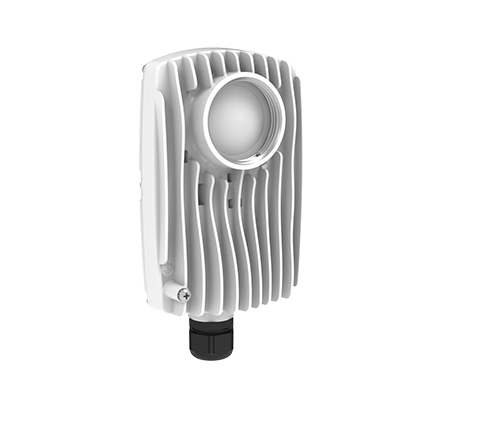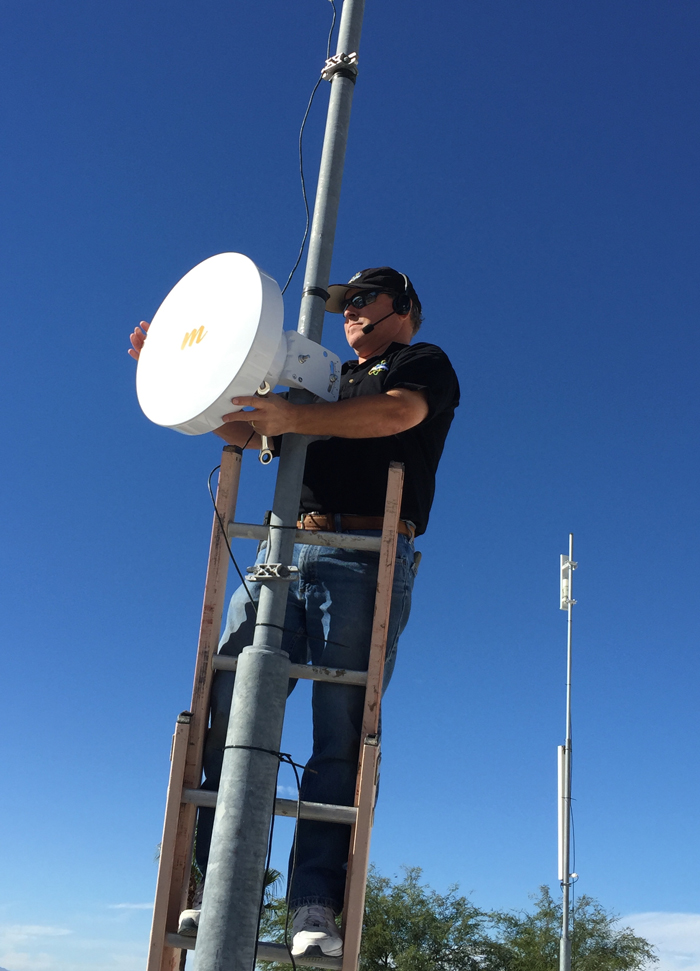Experience the perfect balance of performance and price with the new Mimosa C6x Lite Edition — built for today, ready for tomorrow.

Triad Wireless was looking to transform their network into a next generation network
A forward-thinking vendor with backhaul, access and client solutions
Triad deployed Mimosa A5 access devices, C5 clients, B5c’s, B5-Lites and B11 radios
Significant improvement in the speed of the network and increased deployment options
Triad Wireless, a wireless engineering consulting firm and WISP operator based out of Phoenix, did not start out planning to offer rural Internet. With their sights set squarely on the residential market, the company competed directly with cable and DSL providers, creating a different model that took advantage of low-cost 802.11-based equipment, deploying an increasing number of Access Points and moving them closer to customers. Triad continued with this model until the equipment that was being deployed could no longer compete with low-cost 40 Mbps DSL and faster 150 Mbps cable service. To realize his vision of a high-speed next generation wireless network, founder Rory Conaway turned to Mimosa.
Designed with unique integrated massive MIMO antenna technology, it was evident that the Mimosa A5 access devices coupled with Mimosa C5 clients would allow Triad Wireless to deliver the speeds required to meet the 200 Mbps service they were planning to upgrade their clients to in the Tucson, Arizona area.
“We were not only pleasantly surprised by the range of the smaller A5-14 dBi in terms of line-of-sight, we saw large improvements through vegetation which meant we could use the smaller C5 clients in place of larger CPE dishes we previously deployed,” Mr. Conaway stated.
“Mimosa has opened up huge opportunities for us that simply didn’t make financial sense for us before”

With the technology in place to compete with wireline providers, Triad is now making plans to expand their client base from 500 residential users to at least 10,000 within the next year. In addition to the expansion of the system using the A5, Triad Wireless is making extensive use of Mimosa B5-Lite backhauls to extend the network out to less dense areas, using Mimosa B5c backhauls to reach more remote pockets of houses, and Mimosa B11 backhauls to bring not only bigger backhaul links within the city for businesses but also to more rural areas. “The high-performance and low-cost radios have opened up huge opportunities for us that simply didn’t make financial sense for us before, including rural Internet,” he added.
One such case is Arizona’s largest egg farm which has been in need of a more stable and faster system to handle its growth. It recently chose Mimosa to be the next-generation wireless to connect all the buildings and facilities on the property. In addition, other farm assets up to 16 miles away will be connected with both licensed and unlicensed Mimosa radios.
“We will be offering packages of 10-100 Mbps which will be a magnitude faster than what they have had for years”
Mr. Conaway also shared that he is about to connect a town in Arizona that has one provider and has been unable to provide sufficient Internet to businesses or residents. “It’s a shame, residential users are only guaranteed 256K of service and businesses are stuck with bonding T-1s to get anything even useful. We have entire hotels sharing 4.5 Mbps for 150 people and 200-300 devices every night which makes it effectively useless.” Triad Wireless is building a 50 mile link with a combination of B11 backhauls, B5c backhauls and A5 access devices with the expectation of bringing at least 500 Mbps into the town to start. “We will be offering packages of 10-100 Mbps which will be a magnitude faster than what they have had for years.”